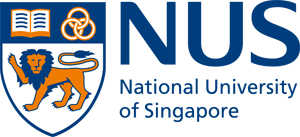
Dr. Naima Iram
Academic Qualifications
PhD in Environmental Sciences, Griffith University, Queensland, Australia
Master of Zoology, University of Sargodha, Punjab, Pakistan
Master of Education, University of Sargodha, Punjab, Pakistan
Research areas
Blue Carbon, Carbon budgets, Greenhouse gas fluxes, Coastal wetland ecosystem services, wetland restoration
Research interests
I am a wetland ecologist interested in finding the potential of coastal wetlands, including seagrasses, mangrove forests, salt marshes and supratidal forests, in tackling climate change through blue carbon and associated ecological services. My research integrates field data to answer questions about carbon and nitrogen cycling, particularly carbon storage and greenhouse gas emissions of carbon dioxide (CO2), methane (CH4), and nitrous oxide (N2O) from the coastal wetland.
Biography
My interest in wetland ecology, mainly blue carbon, started during my PhD at Griffith University, Australia. My doctoral research was focused on evaluating parameters that can be incorporated into carbon projects, such as the restoration of coastal wetlands. During my doctoral research, I measured blue carbon, including soil carbon sequestration and greenhouse gas fluxes from a wide range of natural, degraded and restored coastal wetlands. My work is some of the only research providing information for developing the Blue Carbon Methodology to mitigate carbon emissions in Australia (https://doi.org/10.1111/rec.13739). In my post-doctoral research, I worked on a restoration project called Blue Heart Sunshine Coast to explore blue carbon and blue carbon co-benefits of wetlands restoration (2022-2025). With Dr Fernanada Adame, my role was to quantify emissions factors and water quality improvement benefits of wetlands restoration on marginal agricultural lands.
Previously, I have worked as a Lecturer in Zoology (2 years) and an Educator (3 years) at secondary and tertiary levels in Pakistan. These roles involved teaching zoology and biology courses and mentoring undergrad and high school students.
At the Centre for Nature-based Climate Solutions, National University of Singapore, I am leading a field team for a large regional blue carbon project funded by Temasek Holdings. My research aims to quantify robust and defensible blue carbon budgets of mangroves and seagrasses across Southeast Asia by measuring in-situ carbon stocks and fluxes.
Selected publications:
- Malerba, M.E., Friess, D.A., Peacock, M., Grinham, A., Taillardat, P., Rosentreter, J.A., Webb, J., Iram, N., Al-Haj, A.N. and Macreadie, P.I., 2022. Methane and nitrous oxide emissions complicate the climate benefits of teal and blue carbon wetlands. OneEarth, 5(12);1336-1341. https://doi.org/10.1016/j.oneear.2022.11.003.
- Iram, N., Maher, D. T., Lovelock, E., Baker T., Cadier, C., Bunn, S. E., & Adame M. F. Climate change mitigation and improvement of water quality from the restoration of a subtropical coastal wetland. (2022). Ecological Applications, 32 (5); e2620. https://doi.org/10.1002/eap.2620.
- Iram, N., Kavehei, E., Maher, D. T., Bunn, S. E., Rezaei Rashti, M., Farahani, B. S., & Adame, M. F. (2021). Soil greenhouse gas fluxes from tropical coastal wetlands and alternative agricultural land uses. Biogeosciences, 18(18), 5085-5096. https://doi.org/10.5194/bg-18-5085-202.
- Adame, M. F., Waltham, N. J., Iram, N., Farahani, B. S., Salinas, C., Burford, M., & Ronan, M. (2021). Denitrification within the sediments and epiphyton of tropical macrophyte stands. Inland Waters, 1-10. DOI:10.1080/20442041.2021.1902214.
- Kavehei, E., Iram, N., Rashti, M. R., Jenkins, G. A., Lemckert, C., & Adame, M. F. (2021). Greenhouse gas emissions from stormwater bioretention basins. Ecological Engineering, 159, 106-120.
Feature and publications in popular media:
- Iram, N. A saltmarsh successfully restored on unproductive sugarcane land in Yandina wetlands, Queensland, Australia, photographed 18 April 2020. Cover Photo. The Bulletin of the Ecological Society of America, 2327-6096. https://doi.org/10.1002/bes2.1902.
- Iram, N., & Adame M. F., Unproductive Sugarcane Land Restored into Wetlands After Tidal Re‐connection saltmarsh successfully restored on unproductive sugarcane land in Yandina wetlands, Queensland, Australia, photographed 18 April 2020. Cover Photo. The Bulletin of the Ecological Society of America, 103(3). 2327-6096. https://doi.org/10.1002/bes2.1990.
Conference and presentations:
Iram, N., Maher, D. T. Lovelock, C. E., Baker, T., Bunn, S. E., Adame, M. F., Wetland restoration: A sustainable strategy to restore lost ecological functions of wetlands. Oral recorded presentation delivered at online 11th Intecol Wetland Conference, October 2021.
Iram, N., Once upon a time, there was climate change crises—oral recorded presentation delivered at Australian Rivers Institute 3-minute thesis competition July 2021.
Iram, N., Kavehei, E., Maher, D. T., Bunn, S. E., Rezaei Rashti, M., Farahani, B. S., & Adame, M. F. Potential greenhouse gas mitigation gains by conversion of agricultural lands to coastal wetlands. Oral recorded presentation delivered at online the ASLO 2021 Aquatic Sciences Meeting, June 2021.
Iram, N., Greenhouse gas emissions from wetlands versus other land use. Oral presentation delivered at Australian Rivers Institute HDR Seminar June 2021.
Iram, N., Maher, D. T. Lovelock, C. E., Baker, T., Bunn, S. E., Adame, M. F., Greenhouse gas mitigation gains and water quality improvement benefits of restored coastal wetlands. Oral presentation delivered at online International Conference for Young Marine Researchers (ICYMARE), August 2020.

